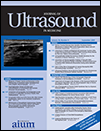Clinical Utility of Low-Volume Ultrasound-Guided Interscalene Blockade
Contraindications Reconsidered
Abstract
Objective. The purpose of this series is to describe cases in which ultrasound guidance was used to allow patients to receive the benefits of regional anesthesia while safely circumventing traditional contraindications to interscalene blockade (ISB). Methods. Targeted low-volume ISB was performed in 3 patients in whom this procedure would typically be contraindicated because of phrenic nerve blockade or risk of local anesthetic toxicity. A patient with severe respiratory dysfunction, a patient undergoing bilateral shoulder surgery, and a patient requiring awake fiberoptic intubation underwent low-volume ultrasound-guided ISB. The ultrasound technique involved the use a low local anesthetic volume, anatomic identification of the brachial plexus trunk, needle placement opposite the phrenic nerve position, and control over local anesthetic spread. Results. In both patients in whom diaphragmatic paralysis was a concern, postoperative respiratory parameters indicated successful regional analgesia without evidence of phrenic nerve blockade. In the patient requiring an additional regional anesthetic procedure, ISB was performed with a local anesthetic volume low enough to avoid exceeding toxic safety thresholds. Conclusions. Although further studies are warranted, we report on 3 cases in which ultrasound guidance was used to allow patients to receive the benefits of regional anesthesia while safely avoiding standard contraindications to ISB. Ultrasound technology may allow providers to perform low-volume brachial plexus blockade while avoiding issues related to phrenic nerve blockade and systemic local anesthetic toxicity.




